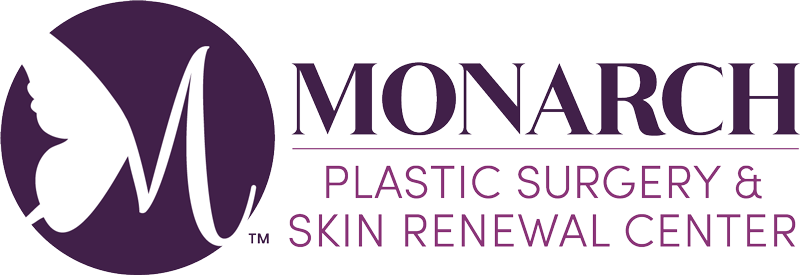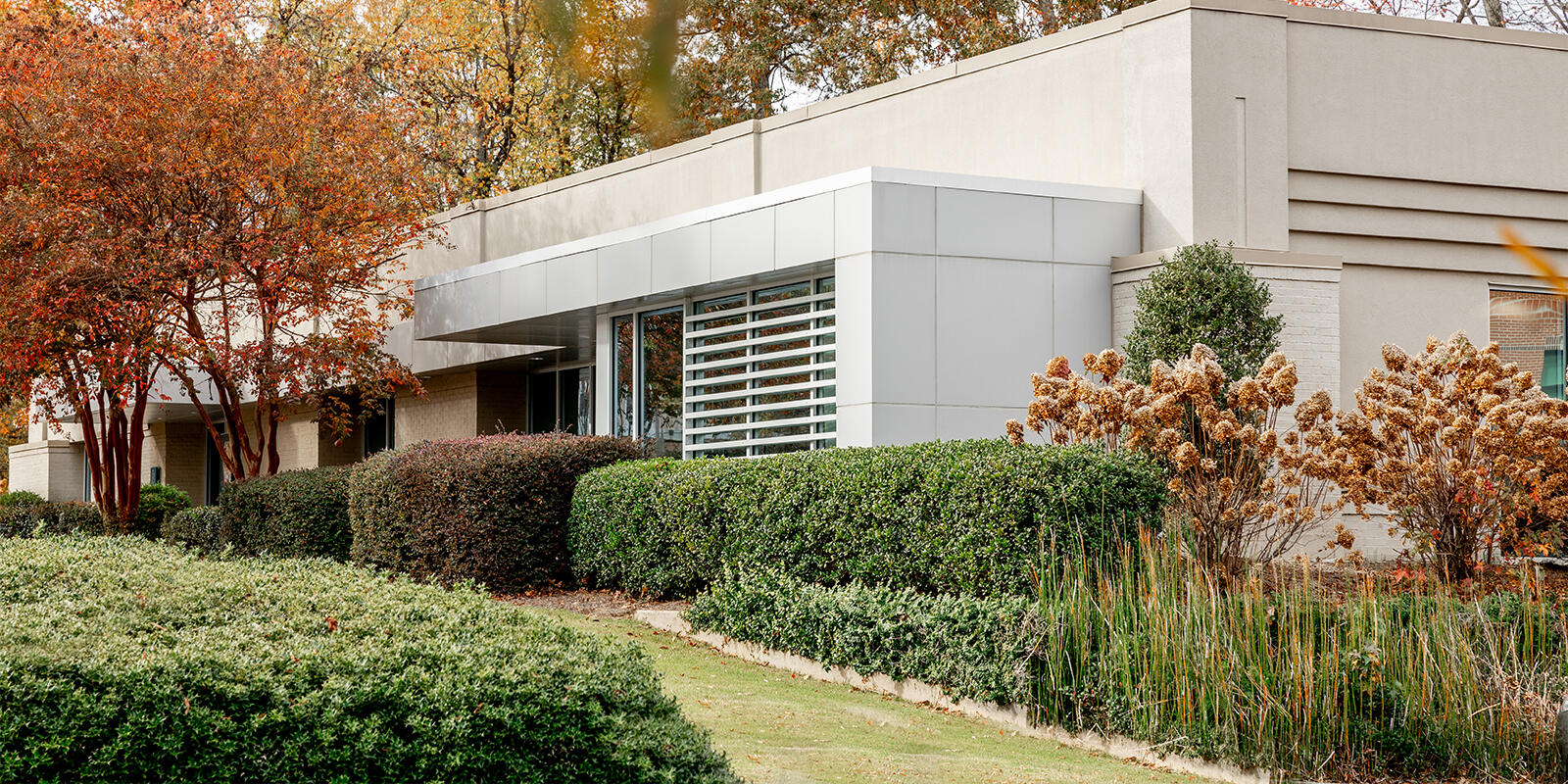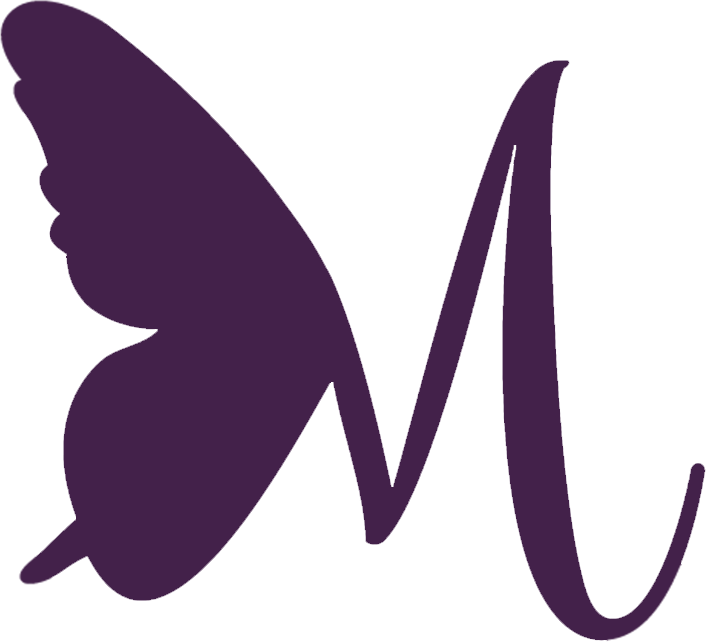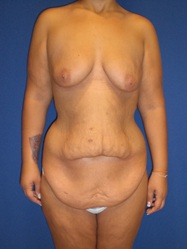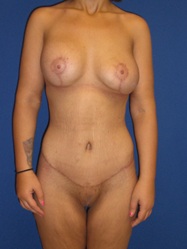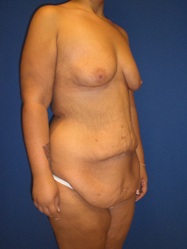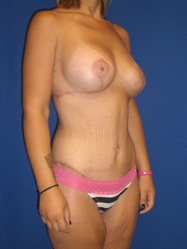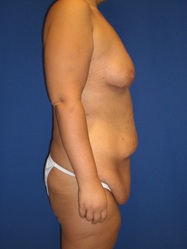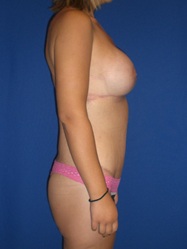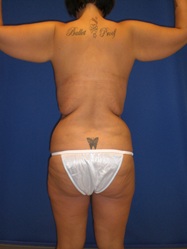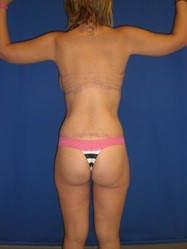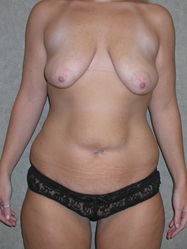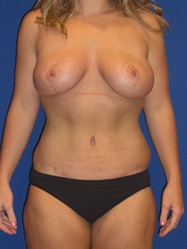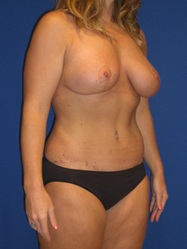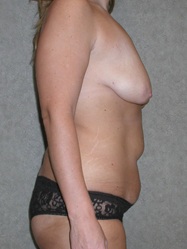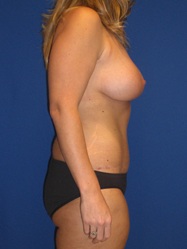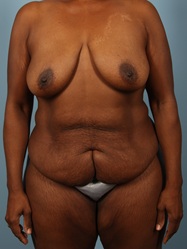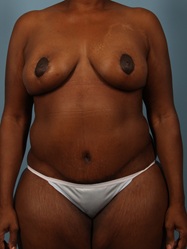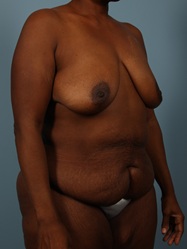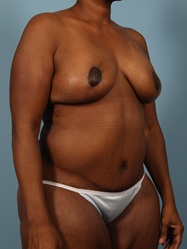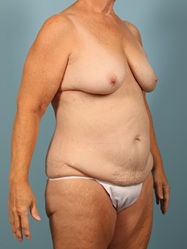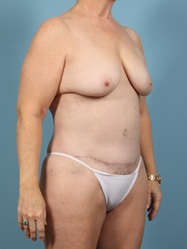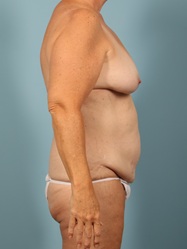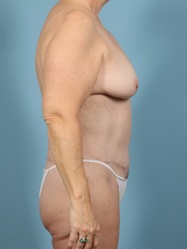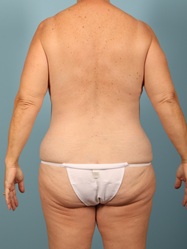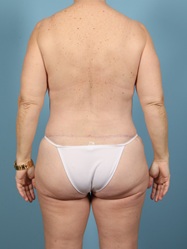Main Content
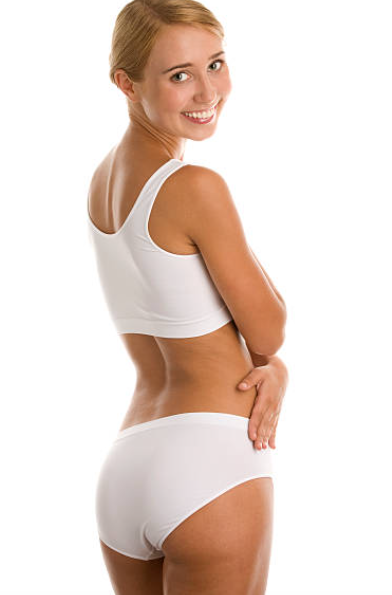
Lower Body Lift
If you think a tummy tuck might be an excellent start for your body contouring but have loose skin or extra fat around your hips and lower back, a lower body lift might be right for you. A lower body lift removes loose skin and extra fat from the abdomen, hips, waist, and back. It also tightens loose abdominal muscles and lifts the buttocks and outer thighs. A lower body lift is frequently combined with liposuction, so you are encouraged to read our liposuction information.
Questions & Answers
Many people notice stubborn fat, loose skin, or “pouching” of the abdomen after life events such as pregnancy or weight loss. In addition to loose skin or stubborn fat in the abdomen, the hips and lower back may also be affected. In some individuals, the rectus abdominis (“six-pack”) muscles may need to be tightened if they have become separated (rectus diastasis) over time. Some people also have small hernias in the abdominal wall that must be repaired. Unfortunately, if you have loose skin or significant separation of your rectus abdominis muscles, no amount of diet and exercise can get you a fully toned tummy and lower back. A lower body lift is a surgical procedure that can address these concerns by removing excess abdominal skin and fatty tissue from the abdomen, hips, waist, and back. It also tightens loose abdominal muscles and lifts the buttocks and outer thighs.
The combined effects of aging, gravity, pregnancy, weight changes, and loss of skin elasticity all contribute to loss of tone in the abdomen, buttocks, and thighs. A lower body lift can markedly improve the appearance of all these areas. The benefits of a lower body lift are unique to each individual. A lower body lift can:
- Remove loose skin of the abdomen, hips, waist, and lower back
- Remove extra fat from the abdomen, hips, waist, and lower back
- Tighten loose rectus abdominis muscles
- Boost your self-esteem
- Improve your self-confidence in and out of clothing
- Add balance to your figure
A lower body lift might be suitable if you want body contouring but have loose skin or extra fat around your hips, lower back, and abdomen. People who have done the work to lose a large amount of weight often find that a lower body lift completes the process, allowing them to fully enjoy the results of their hard work to reshape their bodies.
In addition to deciding whether a lower body lift can meet your personal goals, several factors must be considered in determining whether you are a good candidate for this procedure. Good candidates for a lower body lift include those who:
- Want to improve their midsection shape
- Want to improve loose skin of the abdomen and lower back
- Want to improve the contour of their abdomen, hips, waist, and lower back
- Want to achieve optimal proportions for their figure
- Have generally good physical and mental health
- Are nonsmokers, or are willing to stop smoking before surgery
- Have realistic expectations from abdominoplasty surgery
While a lower body lift can address various concerns, it has limitations. Knowing these limitations and understanding when you may be a candidate for a different type of surgery is essential. A lower body lift cannot:
- Address intraabdominal fat (fat on the inside of your abdomen near your internal organs)
- Be used as a weight loss treatment
- Prevent accumulation of fat or loose skin with future pregnancy or weight gain
- Smoke
- Plan to continue making significant weight changes
Because of the complex nature of this surgery, touch-ups aren’t uncommon after lower body lifts (especially when combined with other procedures). Such revisions might include corrections of mild asymmetry or repair of unfavorable scarring. Our plastic surgeons will see you in our office within the first week after surgery, which is when your tapes will be removed and possibly one or more of your drains. We will see you a few weeks later or more often as needed. You can expect regular appointments (once the initial healing is done) about six months after surgery and again about 12 months after surgery.
Managing pain effectively is a large focus of our recovery plan. In addition to a multimodal pain medication regimen, our plastic surgeons use an On-Q pain pump to deliver numbing medicine for postoperative pain relief. The medicine is delivered automatically—you don’t need to do anything. We have found that our patients using the On-Q pain pump need fewer narcotics and have a generally quicker recovery than those who don’t.
Generally, a lower body lift is an outpatient procedure, meaning you can go home shortly after the surgery. In some cases, though, particularly if you have other procedures done simultaneously, you may need to stay overnight and go home the next day. After your surgery, you will be placed in dressings and a supportive compression garment. You will spend a short time in the recovery room before a friend or family member takes you home, where you should plan to rest for the remainder of the day. Be sure to arrange for someone to drive you home after surgery and to stay with you for at least the first night. We will advise you on pain medication to ease any discomfort, give you detailed post-operative instructions, and schedule a follow-up appointment to check your progress.
It would be best if you planned to take it easy following your surgery. It would help if you were up and walking the day following surgery, although you will be sore for several weeks. You should be able to resume your normal daily activities within two to three weeks following surgery. No strenuous activities, heavy lifting (over 20 pounds), aerobic exercises, swimming, contact sports, tennis, or golf should be planned for the first three weeks. As we monitor your recovery, we will advise you when it is safe to resume specific activities. You should be able to resume all of your physical activities within six to eight weeks of surgery, depending on the particular needs of your procedure. It would help if you planned to wear the compression garment for about six weeks following surgery.
You may notice less sensation in the abdominal and lower back area. This is usually temporary. It may, however, take weeks, months, or even more than a year before the sensation returns to normal. Incisions will initially be red or pink. They should fade and soften over time (up to 18 months after surgery). You will notice an improvement in your midsection contour immediately. However, your shape will continue to improve in the following weeks as the swelling subsides. Final results are usually seen at six months to a year after surgery.
Every patient’s recovery is different. Your recovery may be quicker or take more time than average.
If you think that you may want to become pregnant in the future, you should mention this to your surgeon. Pregnancy can change body size and shape in an unpredictable way and could affect the long-term results of your lower body lift.
If you are planning to lose a significant amount of weight, be sure to tell your surgeon. She may recommend that you stabilize your weight prior to undergoing surgery.
It’s very common to combine body contouring procedures into one operative session and one recovery. One of the more common combinations involves lower body and inner thigh (medial thigh lift) contouring together. Or you might include liposuction of other body areas, or even facial contouring. In some cases of body contouring after massive weight loss, we are able to do a Total Body Lift (Complete Body Lift) in one operative session. The Total Body Lift or Complete Body Lift typically includes a Lower Body Lift, Inner Thigh Lift, Breast Lift (with or without implants) and Arm Lift, as well as any Liposuction needed to complete those procedures. We understand that most people would prefer to accomplish as much as possible in one operative session, so they have only one recovery period and may be able to save some vacation time for other uses. However, your surgeon is also most concerned for your safety, and she will certainly talk to you about whether the Total Body Lift is something that is right for you. Just talk with our plastic surgeons about your concerns, and we will help you put together a plan that’s safe and right for you.
Please visit our My Consult page to learn more about what happens during your consult.
Please visit our Financing page to learn more about financing options.
Gallery
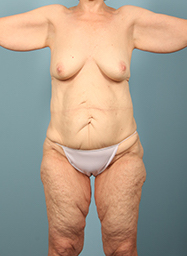
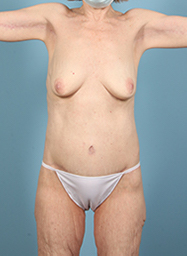
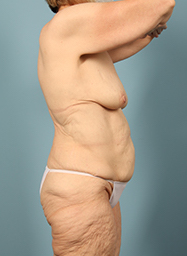
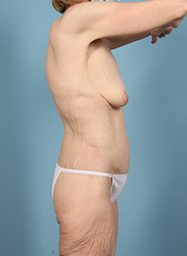
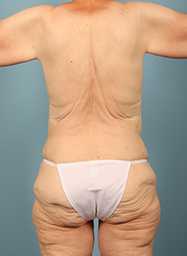
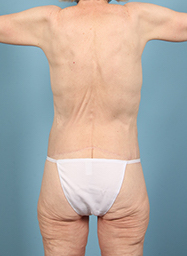
This 60 year old female lost over 100 pounds after bariatric surgery. She wanted to address the loose skin on her abdomen and back. Dr. Kavali did a lower body lift, which removes skin from the abdomen, waist, and lower back. The surgery also lifts the buttocks and thighs. She is shown before surgery and one year after surgery.
- Age: Over 55
- Gender: Female
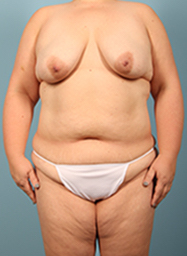
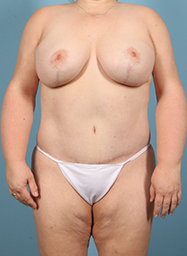
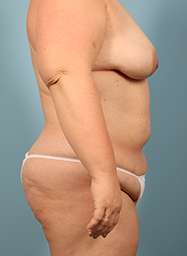
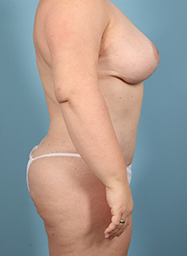
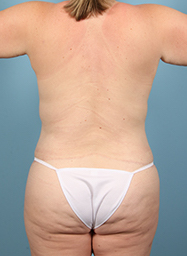
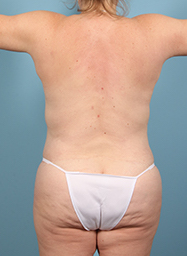
This 39 year old female had nearly 100 pounds of weight loss and desired contouring of her abdomen, waist, back, buttocks, and breasts and arms. Dr. Kavali performed a lower body lift with fat transfer to her hips, an Allergan silicone gel augmentation mastopexy (breast implants with a lift using low profile 290 cc implants), and a brachioplasty (arm lift). She is shown 2 years after her lower body lift and about 3 months after her breast surgery.
- Age: 25 - 40
- Gender: Female
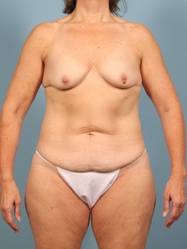
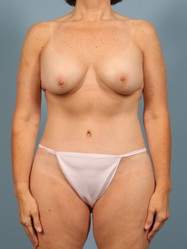
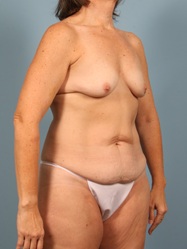
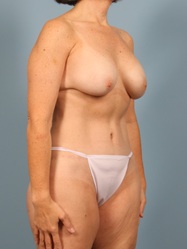
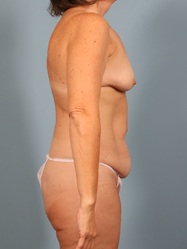
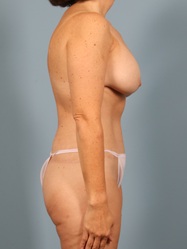
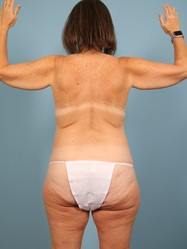
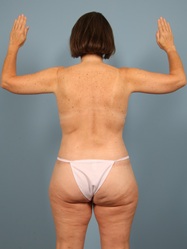
54 year old female desired contouring of her abdomen, back, arms, and breasts. Dr. Kavali performed a lower body lift with liposuction of the waist and back, as well as an augmentation mastopexy (breast implants with a breast lift). She had Allergan silicone gel, smooth, round, soft touch, moderate profile, 345 cc implants placed in total submuscular position, in addition to a superomedial mastopexy. She also had a brachioplasty (arm lift). She is shown before and about 8 month after her surgery.
- Age: 41 - 55
- Gender: Female
- Implant Size: 345 cc
- Implant Type: Silicone
- Implant Location: Submuscular

